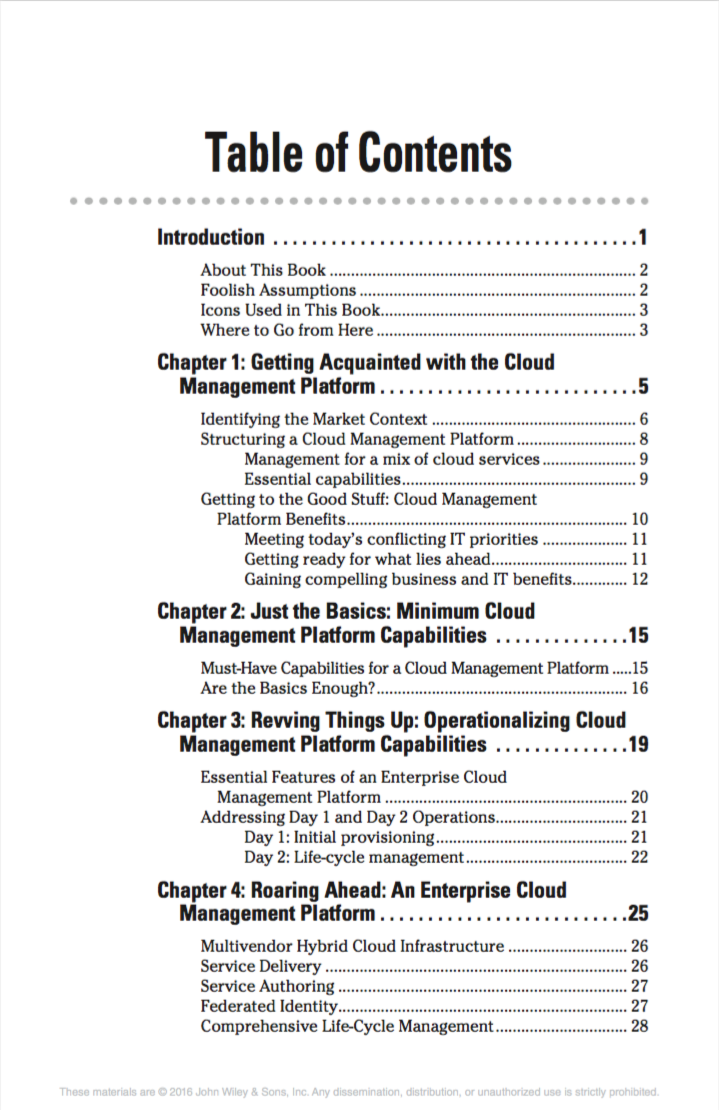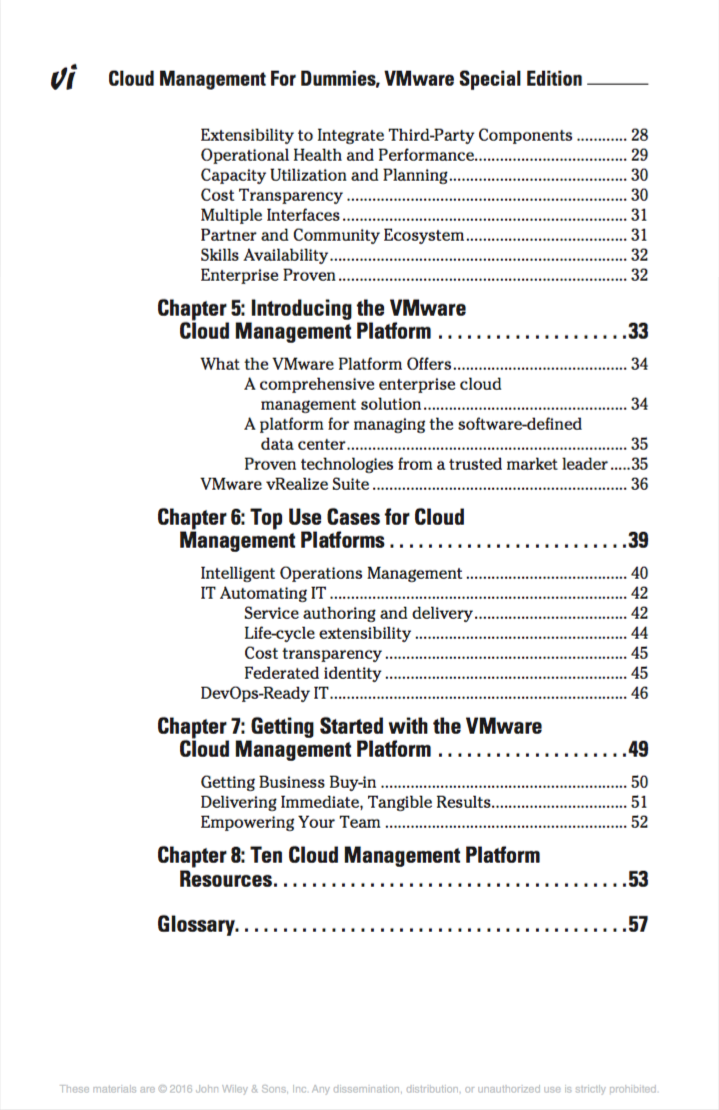I’m proud to announce the release of my first “Dummies” book!
A Cloud Management Platform (CMP) provides a unified platform for managing private, public, and hybrid cloud environments together with conventional and modern application architectures. Cloud Management for Dummies was written to guide organizations through some of the challenges of selecting a cloud management platform as they move from traditional IT to a more modern, automated, and governed infrastructure.
About this Book
Cloud Management For Dummies is loaded with information that can help you understand and capitalize on cloud management. In plain and simple language, we explain what a cloud management platform is, why you need it, and which capabilities to demand in an enterprise solution. We also illustrate common use cases for CMP and guide you to the path to management in the hybrid cloud era.
Excerpt: Identifying the Market Context
Companies in all industries are responding to new opportunities to leverage big data and mobility to drive a better customer experience and a more productive work environment. Many companies are actively pursuing new business models and revenue streams that rely on digitizing and modernizing business processes.
The phenomenon of digitization, along with other structural changes in the business world, is driving the need to dramati- cally speed up application delivery. As any C‐level executive knows, being first to market can mean significant competitive advantage. But the flip side is also true: Being late to market can mean missed opportunities and lost revenue — or worse. Just think of the many companies that have faded into obscu- rity as they were overtaken by more agile and fast‐moving competitors. In many cases, those competitors are essentially masters of the digital universe.
For IT teams, the switch to digitally driven business has big implications. The need to get applications to market quickly is generating increased expectations on IT to provide resources on demand to development, quality assurance, and produc- tion teams. This is one of the keys to enabling the rapid roll- out to production of new and updated applications: the apps that keep the enterprise competitive.
Resource provisioning in many organizations can best be characterized as a combination of automated and manual steps, performed by multiple individuals, across multiple silos, and strung together by a series of help desk tickets that move the provisioning process from one small task to the next. Sound familiar? Figure 1‐1 shows the broad range of these stakeholders. These are unwelcomed legacy processes that must be addressed.
To pull more on that thread, consider this: Over the last decade or so, virtualization has helped IT transform data centers by abstracting and consolidating legacy infrastructure while drastically reducing a critical metric used by the business to justify the investment: cost per application. What used to take weeks or months to rack, stack, install, and configure a new machine is now accomplished within a few minutes — right‐click, deploy from template. And just like that, you’ve provisioned a new replica of your organization’s “gold master.” All good, right?
So, why does it still take weeks — or even months — to fulfill a request for resources and applications?
Although virtualization — and associated management tools — changed the data center landscape, the many inefficiencies still embedded in legacy processes continue to be inhibitors, leading to a timeline that is increasingly unacceptable to IT customers. The inability of IT teams to keep up with these expectations is a big reason why the public cloud market has exploded. You can turn on cloud‐based infrastructure and services and immediately begin provisioning applications, a process that can be completed in a matter of minutes. Try to do that in the typical enterprise IT environment.
In these infrastructures, all aspects of an application’s life cycle are automated — all pre‐ and in‐flight, and post‐ provisioning tasks and associated processes. Automation reaches beyond the application itself with hooks into the broader ecosystem of tools and services. It’s a world where infrastructure just happens.
Fortunately, these capabilities aren’t limited to your big‐box cloud providers. It’s time to step up the pace and meet the evolving expectations of the lines of business and consumers. IT organizations have little choice but to embrace cloud delivery models.
Table of Contents
+++++
virtualjad
![[virtualjad.com]](https://www.virtualjad.com/wp-content/uploads/2018/11/vj_logo_med_v3.png)


